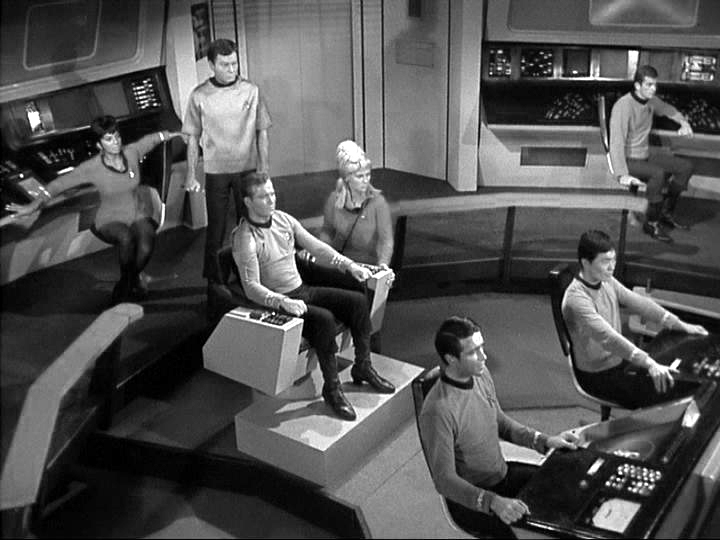Our family was fortunate enough to have a color TV for the premiere of STAR TREK, so we always saw the colors of the uniforms. But most people back then were looking at images like these:



Now these black & white images were taken from color images and had the color removed with computer software. It's not quite the same as a color TV image shown on a black & white TV.
On a black & white TV, colors appeared with different levels of a diagonal cross-hatching effect. Red was affected the most, so Scotty, Uhura, and Rand's uniforms would have that cross-hatch appear stronger than the other uniform colors.
But even looking at these screen shots with colors stripped, one can see a difference in the levels of brightness of the uniforms.
As for why VOYAGE TO THE BOTTOM OF THE SEA crewmen had red or blue overalls, that's probably all Irwin Allen could scrape up.



Now these black & white images were taken from color images and had the color removed with computer software. It's not quite the same as a color TV image shown on a black & white TV.
On a black & white TV, colors appeared with different levels of a diagonal cross-hatching effect. Red was affected the most, so Scotty, Uhura, and Rand's uniforms would have that cross-hatch appear stronger than the other uniform colors.
But even looking at these screen shots with colors stripped, one can see a difference in the levels of brightness of the uniforms.
As for why VOYAGE TO THE BOTTOM OF THE SEA crewmen had red or blue overalls, that's probably all Irwin Allen could scrape up.





